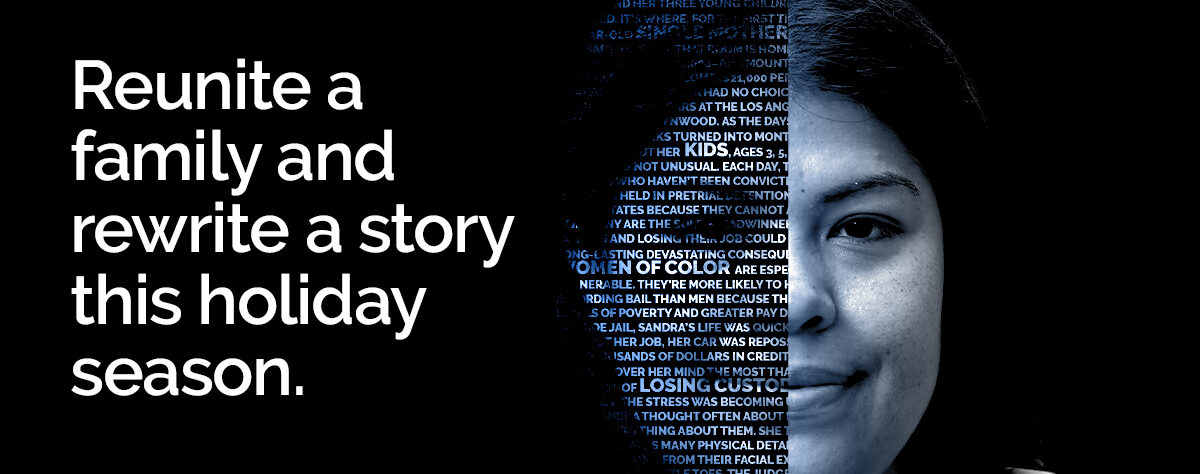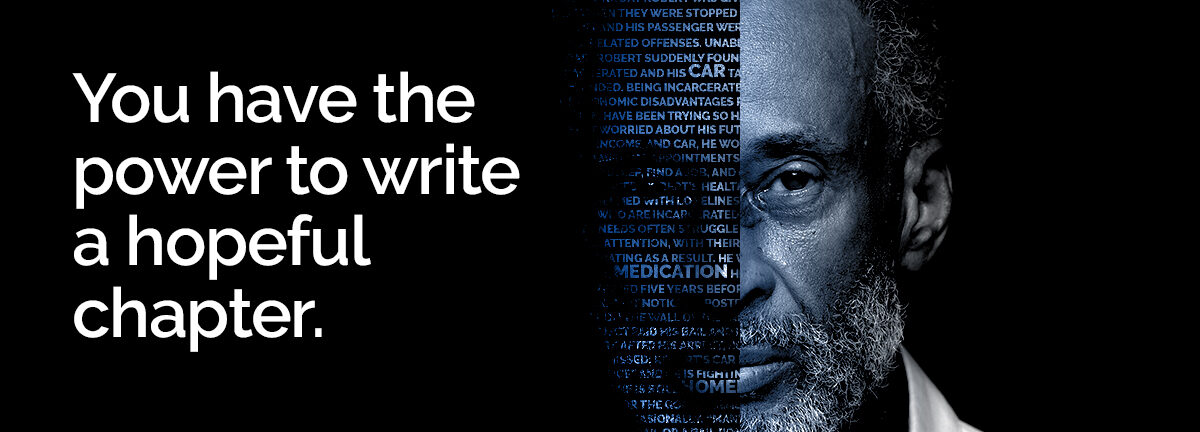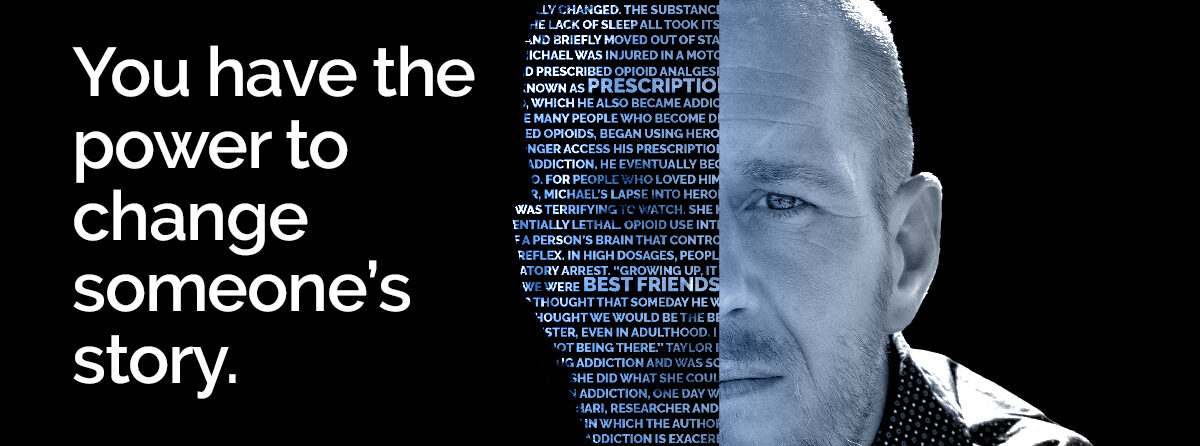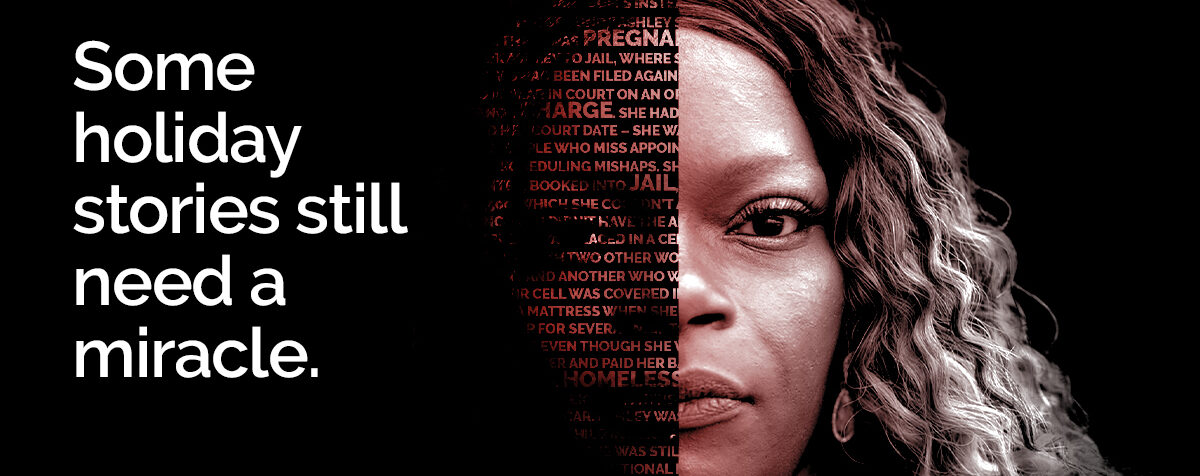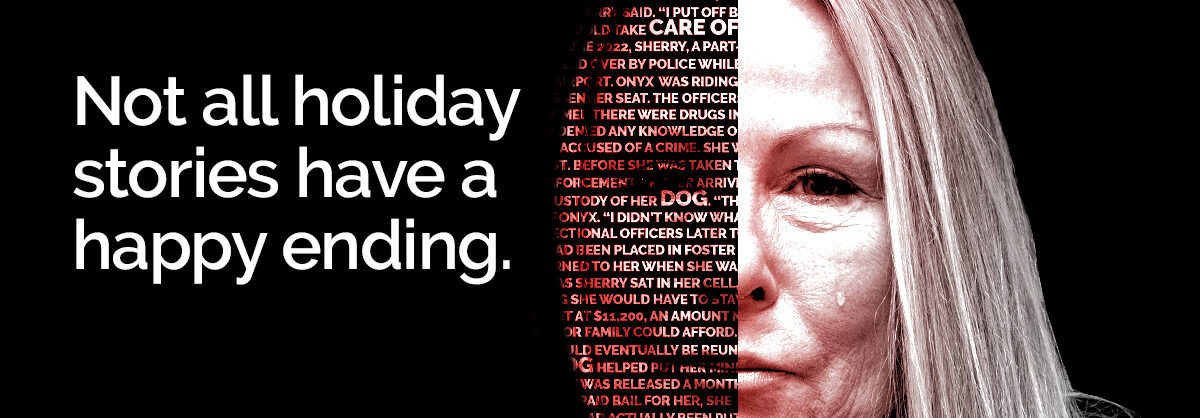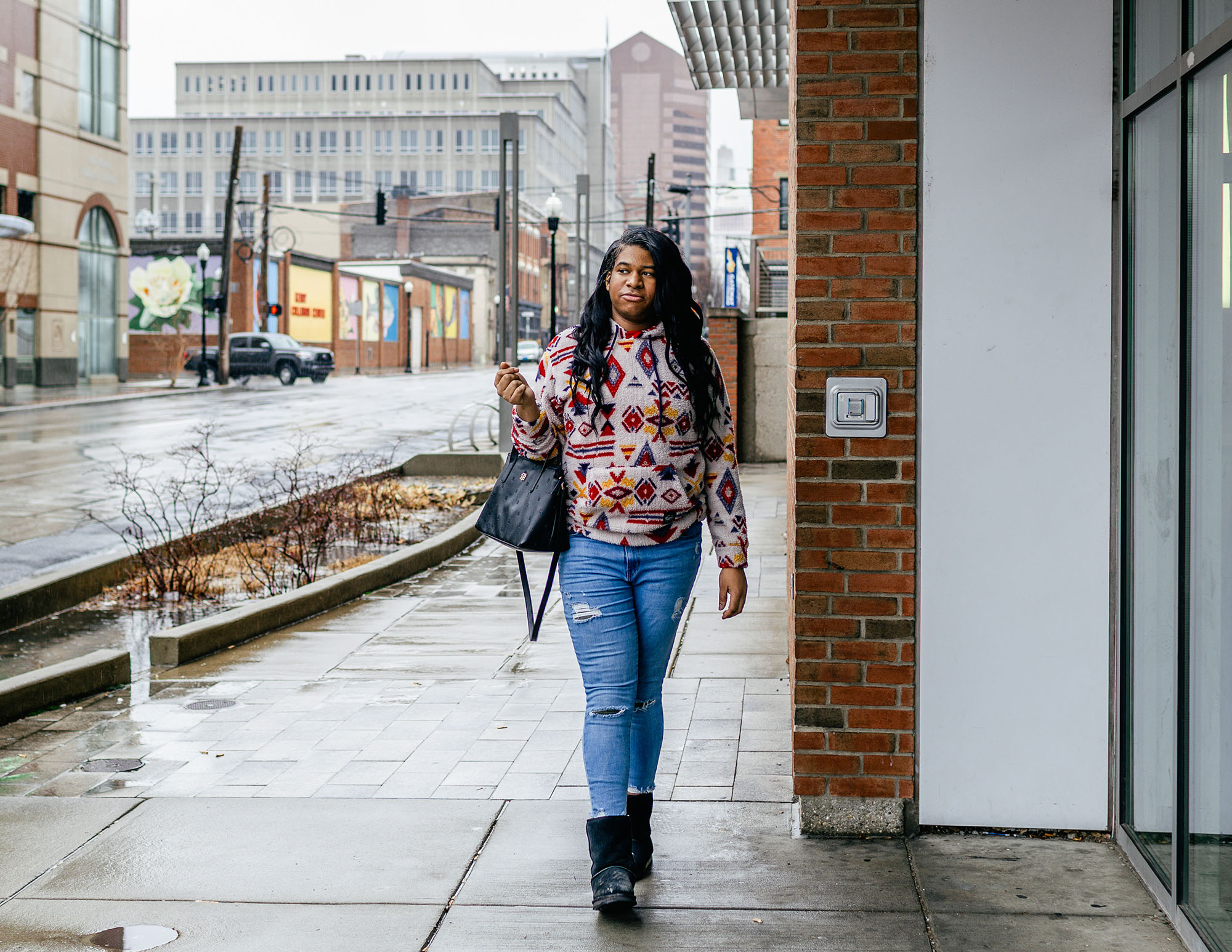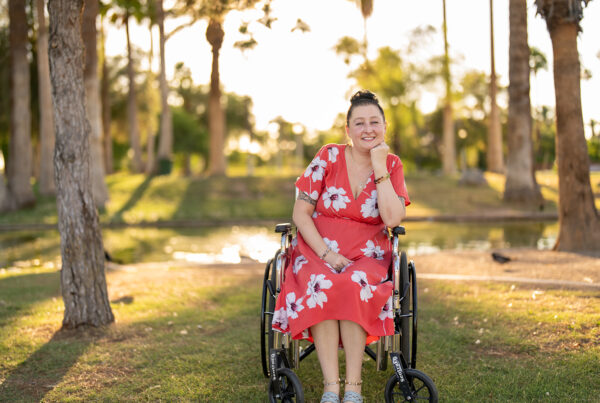Martino, a 21-year-old Black transgender woman, feared for her safety the moment she arrived at the all-male section of the Hamilton County Jail. Prosecutors had charged her with two non-violent misdemeanors. Although those charges would later be dropped and her case dismissed, she still spent two weeks in jail because she could not afford the $200 bail amount that the judge had set against her.
After the bail hearing, correctional officers took Martino to the male section of the jail. When she arrived, she overheard several incarcerated men say they wanted to have sex with her. Other men, she noticed, refused to sit next to her. Over the next 14 days inside the men’s jail, she figured it would be smart to try as best she could to be invisible. She skipped mealtime. She didn’t take showers. She avoided going into the common areas. Most days she relied on bologna sandwiches that she ate alone in her cell. She soon realized that unless she found a way to pay bail, she would continue living in fear of being physically or sexually assaulted.
“I was scared. I heard guys saying they don’t support the trans community. That they don’t accept it.”
“I was scared,” Martino recalled. “I heard guys saying they don’t support the trans community. That they don’t accept it.”
Transgender people who are incarcerated face serious risk of being sexually and physically harmed. According to the latest survey conducted by the National Center for Transgender Equality, transgender people who are incarcerated are over nine times more likely to be assaulted or abused than the general population, and over five times more likely to be assaulted or abused by facility staff. Transgender women, like Martino, face especially high risk of violence. According to a study published by the National Institute of Corrections, transgender women who are placed behind bars with men are 13 times more likely to be sexually assaulted than cisgender men.
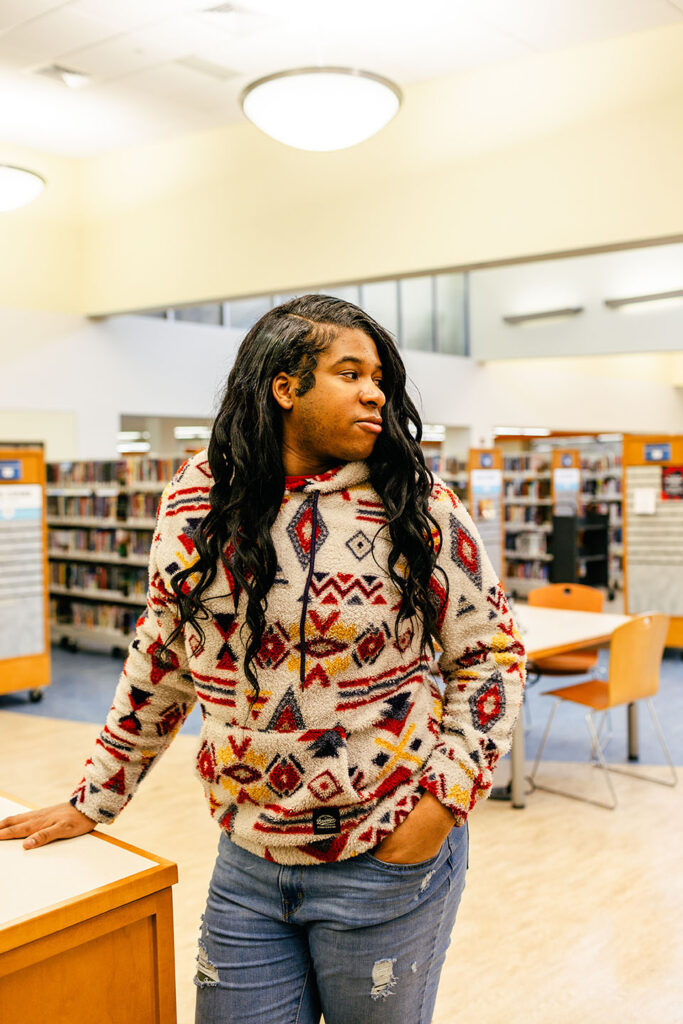
Because of these known risks of harm, federal law requires correctional staff to consider on a case-by-case basis where to house transgender people. In accordance with these federal guidelines, Ohio’s Department of Rehabilitation and Correction policy directs staff to consider whether the housing assignment for a transgender person would ensure that person’s health and safety. It also states that staff are required to consider that person’s own views during the intake process. “All people in custody are screened for the risk of being sexually abused by other people in detention,” the policy states.
However, Martino’s story shows how the situation on the ground is different. Reports suggest transgender people across the country are being routinely assigned to jails based on their sex assigned at birth, without any regard for how they identify. This is despite the 1994 U.S. Supreme Court ruling that correctional staff who fail to protect transgender people in custody can be held accountable under the Eighth Amendment to the United States Constitution, which ensures that no one be subject to cruel and unusual punishment. Martino’s experience presents the latest example of how the carceral system fails to address the safety concerns and unique needs of incarcerated transgender people. It also calls into question whether correctional facilities are doing enough to enforce state and federal guidelines.
Martino is ambitious and driven to succeed. She learned to be independent and self-sufficient at a young age. She was born and raised by her single mother in Covington, Kentucky. For most of her childhood, her father was incarcerated and unable to be involved in her life. When she was around 11, her mother suddenly died, uprooting her sense of safety. Her mother was Martino’s primary caregiver and main support system.
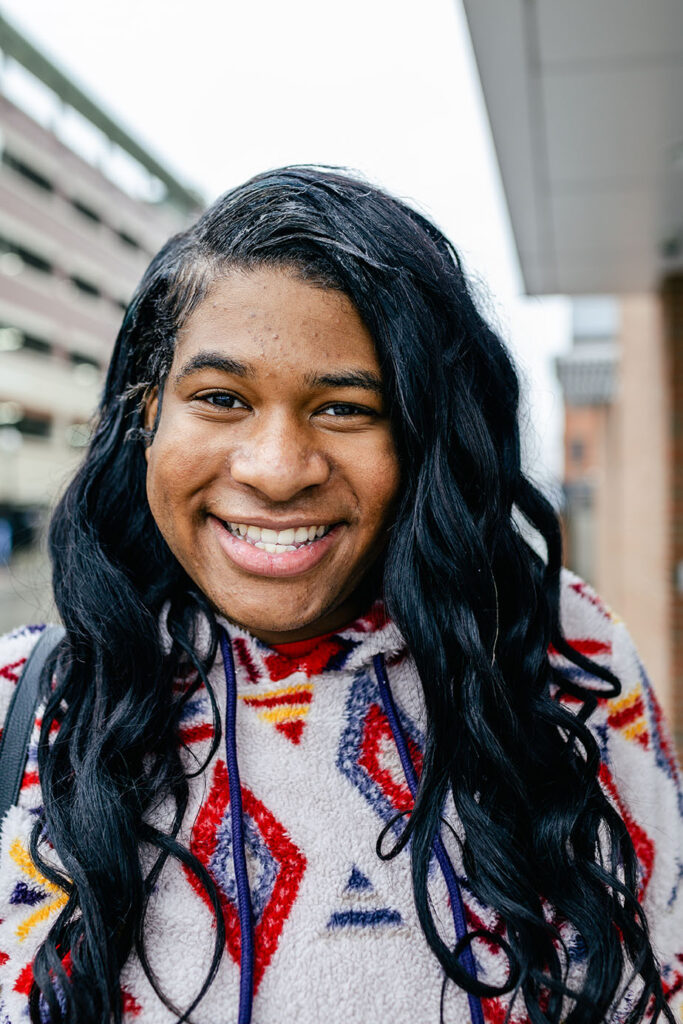
Martino lived in a shelter for youth for a short time afterward. Then she was transferred to the Children’s Home of Northern Kentucky (CHNK), an inpatient residential treatment program in Burlington, Kentucky. The program offers psychiatric and behavioral health services for children in state custody who come from fractured families. But what was supposed to be a four-month stay turned into one year. Living there broke Martino’s spirit. “I was being watched all the time. I was forced to take medication,” she said. “My social worker dropped my case, so I had to wait until somebody else picked it up. That’s why it took me so long to get out of there.”
The rest of her childhood and adolescent years didn’t get much easier. Martino was forced to jump between different cities in Kentucky and Cincinnati, rarely staying in one place for too long. She spent four months living with a foster family before moving in with her grandmother. Then she moved in with her father’s aunt after she got custody of her.
Like most teenagers, Martino longed for security and also desired independence. Having both would allow her to forge her identity and develop values and opinions that aligned with her authentic sense of self. However, at times Martino said she felt she had to choose between either feeling accepted or having autonomy. “Being that I was gay and Black, I felt like that it didn’t sit right with many people,” she recalled. “As I was growing up, people didn’t like it very much. I got picked on and bullied.”
Despite these difficulties, Martino was determined to succeed. She started working at around age 16 so that she could buy her own clothes and pay for a cell phone. She also was determined to excel in school. “I wanted to go to school to learn as much as I could,” she said. “I really wanted a good GPA.”
Martino decided around her sophomore year in high school that she wanted to become a counselor so that she could help other young people who had gone through traumatic events. “I was going through some real harsh life things,” she said. “So I have the tools that I know can help me relate to other people.”
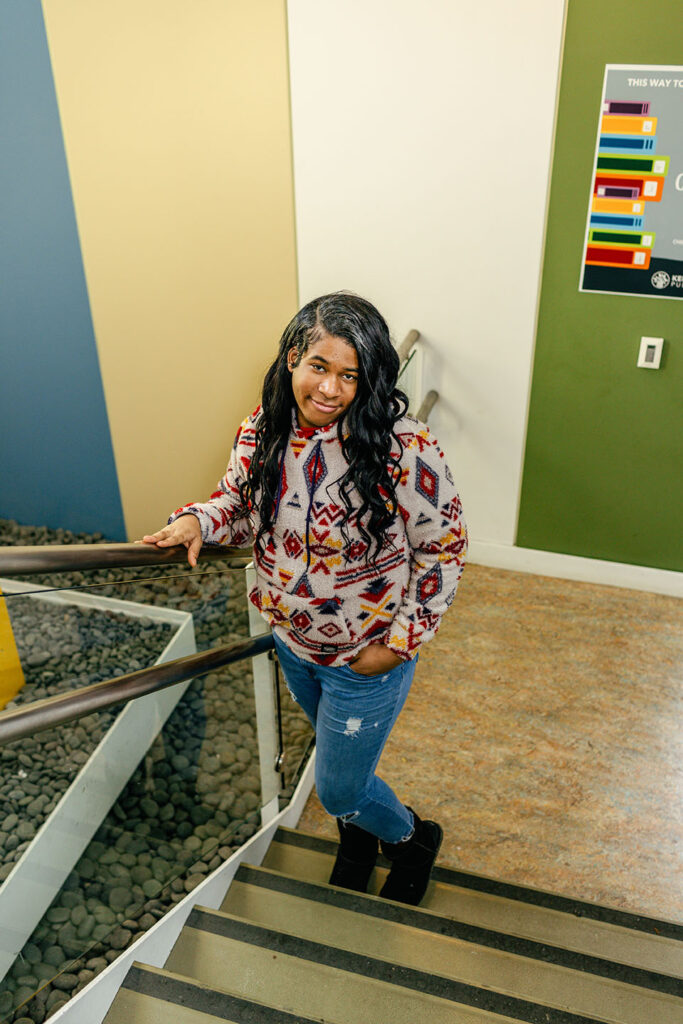
After Martino graduated high school, she took time off to figure out her next steps. However, she said her difficult childhood experiences made it hard for her to feel like she could succeed. “I wasn’t getting the correct love that I needed given that my mom passed away,” she said. “I turned rebellious. I wasn’t listening to anybody.”
When Martino reflects on what the last three years have been like since she graduated high school, she acknowledges making a few decisions that she now regrets. Still, she never thought she would end up incarcerated. Her case is not a one-off situation. Transgender people are disproportionately impacted by the criminal justice system in many ways. Especially vulnerable are transgender people of color who are low-income. According to the National Center for Transgender Equality’s last national US. Transgender Survey conducted in 2015, the rate of incarceration for transgender people was double that of the nationwide rate of incarceration, and about 10 times higher for Black transgender women.
“I was traumatized. I was falling into a depression and losing myself.”
Martino’s first few days in jail were agonizing. “I was traumatized,” she said. “I was falling into a depression and losing myself.” She also said her cellmate barely spoke with her. According to Ohio state policy, transgender people who are incarcerated are allowed to take separate private showers. Martino said that no one told her that. “I didn’t know how the showers worked,” she said. “I would have preferred to be in a female facility.”
However, like other incarcerated transgender people, Martino didn’t have much of a choice. Part of the problem, advocates say, is that it remains unclear whether federal standards for treatment of incarcerated transgender people are being enforced well enough. They point to how the phrase “a case-by-case basis” – which is written in federal guidelines – is vague language, and how it’s one example of how those mandates may be easy to circumvent. “We’ve heard from so many trans women that prison officials will ask them if they have a penis during intake,” Richard Saenz, a senior attorney with Lambda Legal, told CNN. “And that’s how they decide where they should be housed.”
After one week in jail, Martino’s cellmate started opening up to her. He told her he noticed she wasn’t eating or showering. He encouraged her to go out during mealtime and also said he’d make sure she had privacy when she took a shower. That’s when things started to change. “My cellmate told me that he would look out for me,” she said. “He wanted me to feel safe. He told me ‘I’ll open the door and look out for you.’”

At the end of two weeks, Martino was finally released when her public defender put her in touch with The Bail Project. After we paid her bail, our Cincinnati team referred her to organizations to help her find a job. We also provided her with free court reminders and transportation to court. Because of the supportive services Martino was able to access, she made it to all her court dates. Her charges were dropped and the case was dismissed later that month.
“I want people to recognize that I just want to be helpful. I want my time to matter. And I’ve remembered that I love myself.”
Martino said her experience in jail has motivated her to start fresh. She recently decided to pursue a job in the medical field and has set up an interview with a program that trains people to become medical assistants. She has several family members in that line of work. “I want people to recognize that I just want to be helpful,” she said. “I want my time to matter. And I’ve remembered that I love myself.”
Thank you for reading. The Bail Project is a 501(c)(3) nonprofit organization that is only able to provide direct services and sustain systems change work through donations from people like you. If you found value in this article, please consider supporting our work today.


